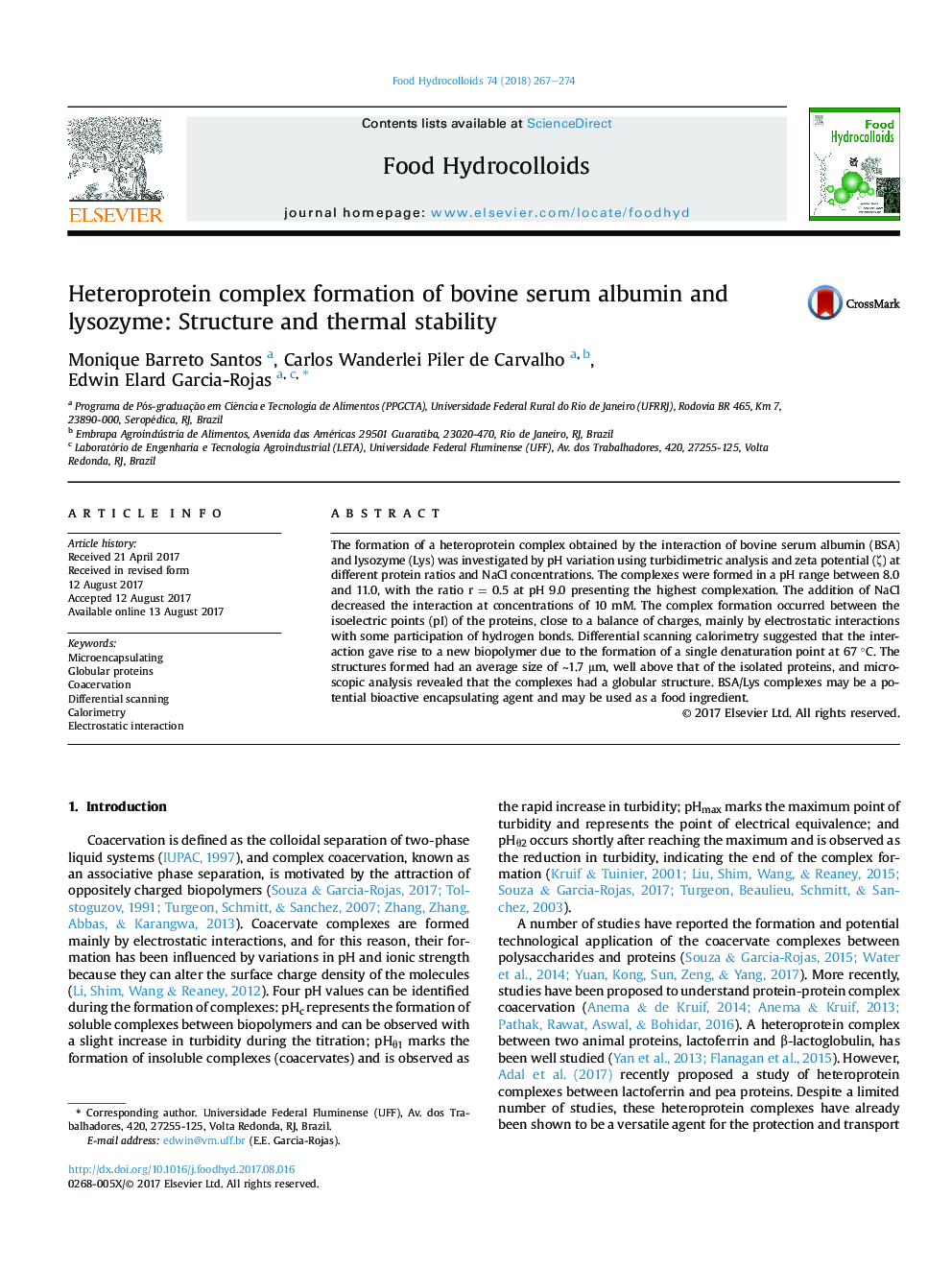| کد مقاله | کد نشریه | سال انتشار | مقاله انگلیسی | نسخه تمام متن |
|---|---|---|---|---|
| 4983748 | 1454403 | 2018 | 8 صفحه PDF | دانلود رایگان |
- The interactions occurred between the isoelectric point of the proteins.
- Addition of NaCl did not favor complexation between BSA and Lysozyme.
- In addition to electrostatic bonds, hydrogen bonds also participated in the coacervation.
- Denaturation temperature was unique and different from the biopolymers.
The formation of a heteroprotein complex obtained by the interaction of bovine serum albumin (BSA) and lysozyme (Lys) was investigated by pH variation using turbidimetric analysis and zeta potential (ζ) at different protein ratios and NaCl concentrations. The complexes were formed in a pH range between 8.0 and 11.0, with the ratio r = 0.5 at pH 9.0 presenting the highest complexation. The addition of NaCl decreased the interaction at concentrations of 10 mM. The complex formation occurred between the isoelectric points (pI) of the proteins, close to a balance of charges, mainly by electrostatic interactions with some participation of hydrogen bonds. Differential scanning calorimetry suggested that the interaction gave rise to a new biopolymer due to the formation of a single denaturation point at 67 °C. The structures formed had an average size of â¼1.7 μm, well above that of the isolated proteins, and microscopic analysis revealed that the complexes had a globular structure. BSA/Lys complexes may be a potential bioactive encapsulating agent and may be used as a food ingredient.
138
Journal: Food Hydrocolloids - Volume 74, January 2018, Pages 267-274
